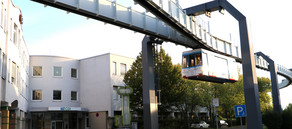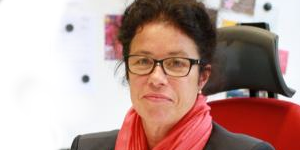Study on the impact of Erasmus+ in schools and other educational institutions in the school sector
Funding

Project description
The Erasmus+ program, which is funded by the European Union in the field of education, and its predecessor programs aim at international exchange and represent central building blocks of European education policy and practice. To date, there are only a few empirically obtained findings on the effects of Erasmus+ in the school sector, both internationally and in Germany.

The following study addresses this research desideratum and aims to (1) make the effects of Erasmus+ in the school sector tangible, comprehensible and verifiable and to shed light on its impact, (2) identify conditions for success for Erasmus+ in the school sector in order to be able to support future projects effectively and successfully, and (3) make the effects of Erasmus+ in the school sector in Germany more visible.
The study will be conducted by an interdisciplinary team of researchers from 2022 to 2024 and will follow an innovative mixed-methods research design that incorporates different methodological approaches and target groups. It comprises the following three sub-studies:
- Sub-study "Demography": The aim of this sub-study is to create a systematic "demography" of general education schools in Germany participating in Erasmus+ in order to gain an overview of participating school types, their characteristics and regional distributions (survey methods: document analyses, secondary data analyses).
- Sub-study "Implementation": In sub-study 2, an in-depth insight into the implementation of Erasmus+ in general education schools will be gained by means of a qualitative approach. For this purpose, the functioning and use of Erasmus+ elements such as mobility projects and eTwinning in everyday school life will be examined in more detail (survey method: guided expert interviews).
- Sub-study "School Classroom Processes": In sub-study 3, the impact of Erasmus+-based teaching measures on students and teachers in comparison to normal teaching will be investigated by means of a quantitative approach (survey method: ambulatory assessment).
Publication of the project results
-
Hornberg, S., Becker, M. & Sonnenburg, N. (Hrsg.). (2025). Lernmobilität in Europa: Eine Mixed-Methods-Studie zu Erasmus+ in der Schule. [Learning mobility in Europe: A mixed-methods study on Erasmus+ in schools] Münster: Waxmann. https://doi.org/10.31244/9783818850258
Detailed version of the study results as eBook - Hornberg, S., Becker, M., Sonnenburg, N., Peitz, M. & Schreiber, S. (2025). Lernmobilität in Europa. Zusammenfassung der Studie zu Erasmus+ in der Schule. Münster: Waxmann.
Deutschsprachige Zusammenfassung
- Hornberg, S., Becker, M., Sonnenburg, N., Peitz, M. & Schreiber, S. (2025). Learning Mobility in Europe. Summary of a Mixed-Methods Study on Erasmus+ in Schools in Germany. Münster: Waxmann.
English Summary
- Hornberg, S., Becker, M., Sonnenburg, N., Peitz, M. & Schreiber, S. (2025). Les mobilités d‘apprentissage en Europe : Résumé d‘une étude par méthodes mixtes sur la mise en oeuvre d’Erasmus+ dans le champ scolaire allemand. Münster : Waxmann.
Résumé en français






![[Translate to English:] [Translate to English:]](/storages/ifs-ep/_processed_/8/5/csm_AdobeStock_412860748_9a2dbb816c.jpeg)

